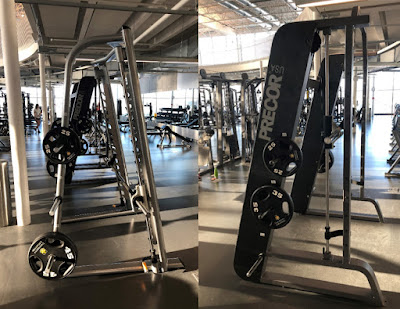Who Can Benefit From Personal Training?
by Adam Toffan, M.Sc, NSCA-CSCS, CSEP-CPT Assistant Fitness Training and Assessment Coordinator, Recreation Services at the University of Manitoba
Did you know even some personal trainers utilize personal trainers? Personal training is not just for the rich, the elite athlete or the gym beginner. Some people use a trainer to start a fitness journey, to learn a safe and individualized program, to hold them accountable or to make sure they are progressing appropriately. You can use personal training sessions in any number of ways. You can meet with a trainer every workout to make sure you are regularly going as well as working safely and at a proper intensity. Some people meet once a week to check in periodically while some people check in once a month. Our prices at the Active Living Centre are among the cheapest in the city, giving you the freedom to train as often as you need.
Until recently much of the benefits of personal training have been documented but not quantified. We know personal training helps, but how much? Now we have research to give us the numbers.
Until recently much of the benefits of personal training have been documented but not quantified. We know personal training helps, but how much? Now we have research to give us the numbers.
Personal Training’s effect on Stage of Change:
A large part of the personal trainer’s role is counselling, especially early on when the trainer and client are getting to know each other. When assessing a person’s readiness to change, one tool used by fitness professionals is the Trans-theoretical Model (TTM). This model classifies someone into one of the following stages: Pre-contemplation, Contemplation, Preparation, Action and Maintenance. During counselling, this information is used by the personal trainer to guide the client’s behaviour into action and maintenance.A study based out of the University of Wisconsin found that after a 10-week program with a personal trainer, there was a significant improvement in client behaviour. Excluding the participants who were already in the maintenance stage, 60% of clients moved up one step, and 13% moved up 2 stages. Only 1% moved down in stages. This study suggests that one-on-one personal training is an effective method for changing people’s attitudes and physical activity levels. If you would like to read the full study, you can find it HERE.
Personal Training’s effect on strength, power and aerobic fitness:
We know now that personal training can help change your attitude, but what about fitness? Can a personal trainer actually improve your program results? The answer is; absolutely! Even if you are a regular exerciser, you may not be maximizing your exercise. A personal trainer can help make sure you reach your goals and improve at a faster rate than exercising alone. A 2014 study compared two groups of 17 individuals. Both groups worked out 3 times per week for 12 weeks, but one group was self-directed while the other worked with a trainer. The results are significant. Below is a table summarizing the results of the study.
Variable
|
Change in PT Group
|
Change in Self-directed group
|
Significance (p)
|
Chest
Press Strength
|
+42%
|
+19%
|
0.003*
|
Peak
Leg Power
|
+6%
|
+0.6%
|
<0.0001*
|
Leg
Press Strength
|
+38%
|
+25%
|
0.14
|
VO2max
(aerobic power)
|
+7%
|
-0.3%
|
0.01*
|
Lean
Body Mass
|
+1.3lbs
|
no change
|
0.029*
|
*
signifies statistical significance (p = <0.05)
|
|||
You can find the abstract of the research study here: http://www.ncbi.nlm.nih.gov/pubmed/24276303
If you're investing time and effort trying to improve your fitness, personal training is an excellent way to make sure you get the best results. If you are interested in stepping up your workouts and getting better results, ask our fitness attendants about which personal training option is best for you!
If you're investing time and effort trying to improve your fitness, personal training is an excellent way to make sure you get the best results. If you are interested in stepping up your workouts and getting better results, ask our fitness attendants about which personal training option is best for you!





Comments
Post a Comment